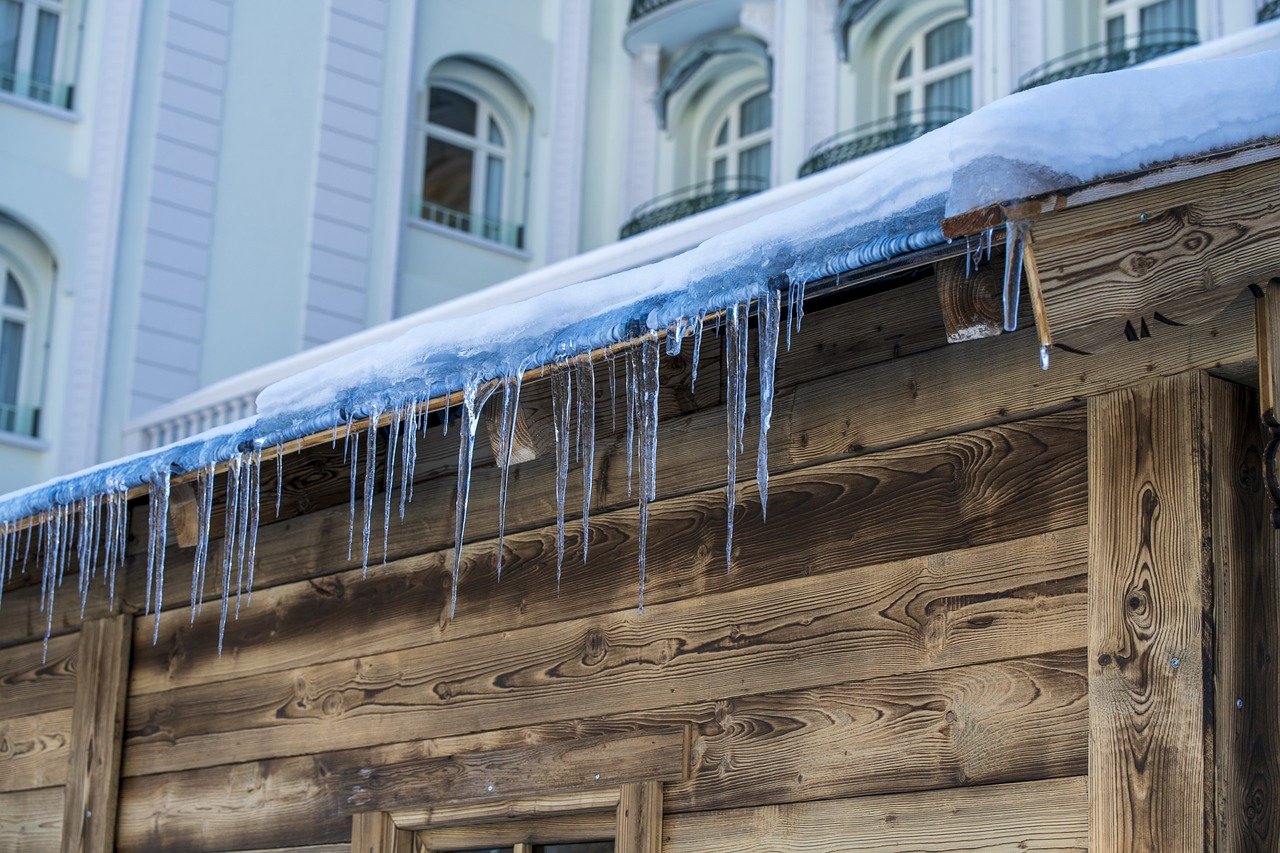There are so many factors that can cause damage to your roof. For example, natural events such as a hurricane, strong wind, tree branches falling on the roof, and icicles can all cause severe damage to the roof. Also, a roof can get damaged if it has already exceeded its expiring date, and when this happens, you will undoubtedly be required to install a new roof.
A roof may take time before it becomes fully damaged, while in some other cases, the damages are not gradual, they just happen at once, and that’s all. For instance, in the event of a hurricane, the damage that the roof will sustain will be sudden and unplanned. But if the roof lack ventilation or there are ice dams on the roof, the damage will be gradual. However, some damages sustained by the roof can be so severe that you will be required to change the roof entirely, while in some cases, you will only be required to replace the damaged shingle or the roof frames.
What Are Ice Dams/Icicles, And What Causes Them?
What you may not know about Icicles is that, although they look very beautiful, they are just as bad as other elements, and they can cause severe damage to your roof and, likewise, your home! Ice dams are caused by ridges of ice that form at the edge of your roof. Their presence along the eaves during a snowstorm can prevent the melting snow from draining off. And when the free flow of water on the roof has been tampered with, the same water will sink (through the shingles that have been lifted) and go directly into your ceilings, walls, floors, etc., thereby causing the roof to suffer great damage.
What to do if You Have an Ice Dam
The idea that prevention is better than cure does not only apply to your health and well-being, you can also apply the same to your roof and everything in your home – with ice dam and roof damage being one of them. Preventing icicles from weighing down your gutters, thereby causing the melting snow to pile up behind them, can go a long way in prolonging the lifespan of your roof. For instance, before the snow season, you can install a heated cable along your roof edge. The role of this heated cable is to crank up the temperature of your roof from outside; this will then help to prevent ice dams from ever forming.
And if you haven’t installed the cable before the cold weather hits, you have to find short fixes for all the icicle problems. Note that these short-term fixes can only be done when you have ice dams and not before you have them.
So, let us briefly discuss some of the short fixes you can do.
- Blow in Cold Air: Contrary to what most people know, banging the ice dams with a hammer or any other hard objects won’t solve anything. If anything, you will end up destroying your roof by yourself. Also, you shouldn’t use salt! Dumping salts on ice dams won’t make it dissolve. Instead, try to get a fan and take it to the attic, where the roof is leaking. Then place the box fan directly to it. The cold air from the fan will stop the water from leaking.
- Rake It: You don’t have a box fan, or you simply don’t fancy the first stopgap solution? Then try to use a long-handled aluminum roof rake to clear the ice dams off your roof. This option, in particular, is arguably the easiest and safest option because it won’t damage your shingle, plus all you will need is just a rake and maybe a boot to maintain your grip on the snow.
- De-ice it using a calcium chloride ice melter: If you want to be inventive somewhat, you can try to de-ice the ice dam by filling a pantyhose with calcium chloride ice melter. After that, place the pantyhose on the roof or in the gutter.
Long-Term Solutions For Ice Dams.
While short-term fixes are essential and equally efficient, nothing will ever beat proffering a long-term solution for ice dams. As humans as we all are, there will be times when we won’t be around or available to rake or blow cold air into the ceiling. Hence, you must find a long-term solution to this Ice dam problem. So, in no particular order, here are a few permanent fixes for ice dams that we will recommend.
- Seal off the Attic Hatch: When you seal off the attic hatch, you prevent heat from escaping from the house. And to do this, you must cover the hatch with weather-stripped caps.
- Ventilate the eaves and ridge vent properly: Ensure that the contractor adds the ridge vent and soffit vents underneath the roof when installing your roof. This helps to circulate cold air beneath the roof.
- Ensure that all the exhaust vents go outside: Another long-term solution for ice damns is to ensure that all the house vents, i.e., dryer vents, kitchen ducts, etc., all go outside through the wall or the roof but never through the soffit.
- Add more insulation to the home: As determined by experts, insulate your home accordingly. This will help to keep the indoor heat regulated.
- Seal and insulate the exhaust ducts with recommended foil-faced fiberglass.
- Add or repair the flashings between the chimney and the house frame.
Conclusion
Understanding how ice dams form and the effects they can have on your roof will go a long way in helping you deal with whatever danger they may pose. However, if you are not sure that your home has the right amount of insulation or ventilation? Then don’t wait till ice dams render your roof completely useless before you schedule a consultation with us at Roofpro to know the status of your roof before winter comes.


